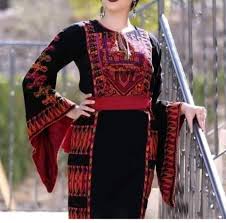
Palestine// PNN//
Preserving a country is intrinsically about protecting its culture and traditions. And this is how many women in Palestine are using embroidery, not only to preserve cultural heritage in the country, but also as a way to reaffirm their independence.
This specific embroidery is called "Tatreez" and its particularity lies in the motifs, which have a historical significance, carrying rich and complex histories of culture and identity. It refers to a a unique style of Palestinian cross-stitch embroidery, which dates from about 3000 years ago.

Despite being a particularly complex embroidery, it is first and foremost a tradition that has been passed down from generation to generation and used by women to preserve their heritage and also a way to convey a specific message. It is also an indicator of social class and the motives or pattern vary from one region to another. Therefore, it tends to reflect a woman’s position in society, ancestry and region. For example, in the area of Gaza, the traditional tatreez is known for the repetition of the cypress tree motif, while tatreez from Ramallah is more famous for its bright red color.
Tatreez is also about history, and especially resistance. Indeed, at the time of Palestinian forced displacement in 1948, tatreez started to become a mean of resistance. Due to the expulsion of many Palestinians in refugee camps, many women opened tatreez studio in order to earn money. But its political significance truly strengthened during the first Intifada that took place from 1987 to 1993. As it was forbidden to display the Palestinian flag, the women made dress that were embroidered with Palestinian flag and the country's colors gradually appeared on fabrics, as a symbol of resistance to the occupation. [caption id="attachment_45400" align="alignnone" width="300"] Intifada dress[/caption]
It is also possible to find different versions of tatreez in Syria, the design being quite asymmetrical comparing to Palestinian one !
Source :
Intifada dress[/caption]
It is also possible to find different versions of tatreez in Syria, the design being quite asymmetrical comparing to Palestinian one !
Source :